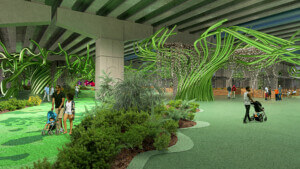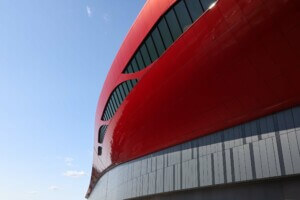The World Architecture Festival is in its third year of existence, and, despite the worldwide recession, seems to have more attendees, trade show participants, and strong projects in its awards program. In what is surely a sign of the times, however, there seem to be many more strong projects in the “future” category than completed buildings. As it has been for the past three years, AN was the event’s American media sponsor, and this year I juried projects in the category of “Future Health and Education Buildings.”
The “future” presented several problems for the jury, as the various projects were all in different states of completion. In fact, one of the buildings the jury selected, the Kuwait Children’s Hospital by Madrid-based AGi Architects, had no window openings on its facade—at least not yet—or a credible entry into the complex. Nonetheless, we decided to give it an award for its adventurous design, in hopes that the client would actually see the project through to completion. What it will look like at the end is anyone’s guess, but at this point it stood out in the Health category.
We gave our Future Education award to another Kuwait project, Sabah Al-Salem University in Kuwait, designed by Perkins+Will’s office in New York City. For this project, the future seems much nearer, as it was more developed and seems to have financing in place. It was recommended for its balancing of large-scale planning issues with small-scale detailing—the building’s facade was particularly well thought out, as it creatively dealt with the harsh climate of Kuwait.
When this project moved through to the final round, however, where it was considered for the award as the outstanding future project of the year, it was attacked by jurists Will Alsop and Charles Jencks for its monolithic facade, which uses a repetitive flange system to shade 80 percent of the surface much of the day and thus reduce energy consumption in this hot climate. I also think Alsop actually wanted a brighter color on the facade (it’s white) and asked the Perkins+Will presenter Anthony Fieldman: “Do you really like the building?” To his credit, Fieldman stood his ground with a firm Yankee “Yes!” In a final comment that would only come from a Brit, Alsop asked Fieldman, “What’s it like to work in a country that does not allow the consumption of alcohol?” Thank god for the British!
The festival’s Best Building winner was no surprise: Zaha’s Maxxi Museum in Rome. Zaha may stand triumphant in Barcelona, but Americans should be proud of the Los Angeles (and Palestine) based firm Suisman Urban Design, which won Best Future Project for the ARC Plan for occupied Palestine.
Winning the student category was the Campus Catalyst Project in Port Au Prince, Haiti, designed by Harvard University students Robin Bankert, Michael Murphy, Caroline Shannon, and Joseph Wilfong. According to the jury’s notes, this project offered a powerful statement, built around the premise of education as a driver for reinventing the landscape after the 2010 earthquake. The project focused on practical applications like agronomy and carpentry, while developing education centers on unoccupied or damaged land adjacent to the current tent villages, where they are most needed. The team won a $16,000 prize courtesy of AECOM, which sponsored the student competition.
Among the other category winners recognized by the juries:
Check the WAF winners site for a full list of winning category projects, and check back here for more on the overall winners.










